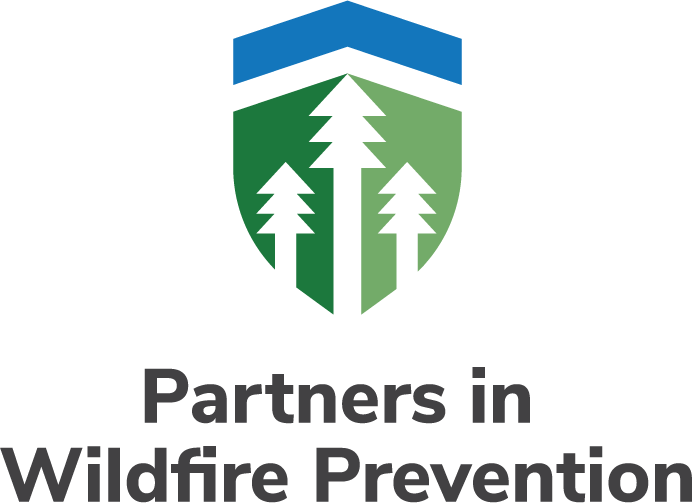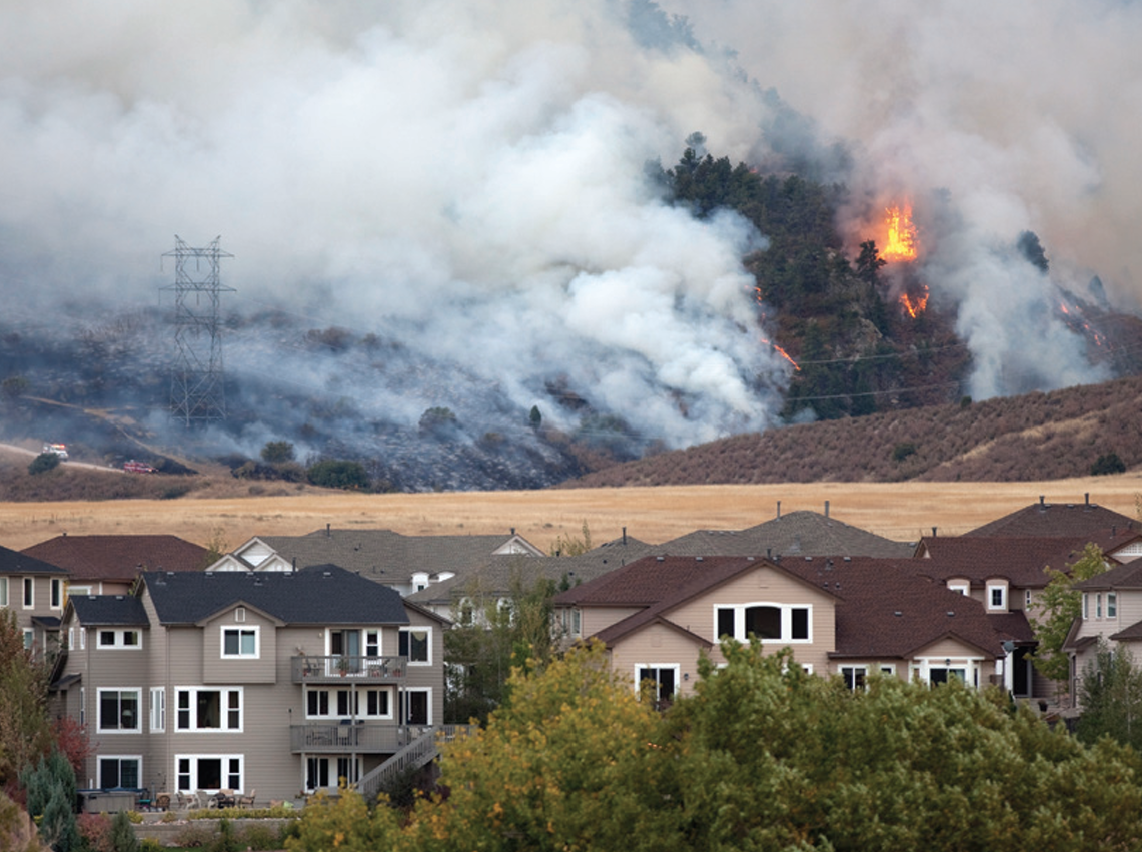Issues & Policy
Overview
Wildfires are a growing challenge, affecting more electric companies and the customers and communities they serve each year. There’s a need to do more to prevent wildfires before they happen and to protect affected communities across the United States from long-term costs.
Wildfires are a societal problem that require societal-level solutions. EEI and our member companies are leading efforts to develop a comprehensive national approach that emphasizes community protection, wildfire prevention, responsible investment, and rapid recovery.
Objectives
EEI and our member companies have identified three broad objectives to address wildfire risks and liability. We are:
- Sharing leading practices and working to establish a common understanding of the range of risk-informed wildfire prevention strategies that electric companies can undertake to reduce ignitions from electric infrastructure.
- Expanding partnerships with the full complement of stakeholders needed to address wildfire risk at the community, state, and federal levels.
- Working closely with regulators, policymakers, ratings agencies, and investors to ensure that electric companies are well-positioned to continue supporting national and economic security; building a resilient clean energy sector; and helping electrify other sectors.
EEI Member Company Mitigation Efforts
Electric companies are making significant investments to enhance energy grid resilience and reliability. As part of these investments, members are working to limit potential wildfire ignitions related to their infrastructure. These efforts include:
- The development and deployment of innovative new technologies, such as cameras and sensors, to ensure better situational awareness and wildfire detection capabilities.
- Selective undergrounding of high-priority and high-risk lines.
- The use of covered conductors to strengthen lines and to prevent sparking when debris comes into contact with broken power lines.
- The expanded use of automatic reclosers with more sensitive settings to prevent sparking when the system detects an anomaly.
- Vegetation management on electric transmission and distribution rights-of-way.
Electric companies also are leveraging existing mutual assistance frameworks to expedite emergency response capabilities to restore power after extreme weather events and to implement, when necessary, proactive shutoffs to minimize the risk of wildfires during certain weather conditions. Coordination with first responders helps ensure that any fires—regardless of the ignition source—can be controlled and fought, ultimately limiting damages to the surrounding communities.
Review the industry’s Comprehensive Wildfire Mitigation Strategy.
Learn more about EEI member company mitigation efforts in our white paper: A Holistic Approach to Wildfire Risk Mitigation for Electric Companies and Their Customers.

Watch: Member Company Videos
Highlights: Member Company Actions
Avista
Avista is taking a proactive approach to preventing, mitigating, and reducing the impact of wildfires on their service territory. Their Wildfire Resiliency Plan showcases their efforts in grid hardening, vegetation management, situational awareness, operations and emergency response, and worker and public safety. Read more on the Avista website.
NorthWestern Energy
NorthWestern Energy has an active wildfire mitigation program that includes hazard tree removal and adding special equipment to transmission lines to prevent sparks in high-risk areas. NorthWestern Energy has invested in strengthening its electric system over the past decade to reduce the risk of wildfires. Read more about their efforts on the NorthWestern Energy website.
NV Energy
NV Energy has developed a Natural Disaster Protection Plan to outline their mitigation and response efforts to wildfires, severe storms, and other natural disaster risks in their Nevada service territory. NV Energy implements a number of measures to help protect customers, equipment, and the environment from wildfires and extreme weather. Learn more about their Natural Disaster Protection Plan on the NV Energy website.
Pacific Gas and Electric (PG&E)
Pacific Gas and Electric Company (PG&E) has implemented numerous wildfire mitigation efforts to strengthen their electric system and better respond to climate challenges. Their mitigation efforts include plans to underground thousands of miles of lines, installing more resilient poles and wires, enhancing line safety settings to de-energize in less than one-tenth of a second when a fault occurs, narrowly targeting Public Safety Power Shutoffs, managing trees and other vegetation growing near lines, and integrating technology to improve risk models. Learn more about PG&E’s wildfire safety efforts and read the company’s wildfire Mitigation Plan on their website.
Portland General Electric (PGE)
Portland General Electric (PGE) plans and prepares year-round for inclement and extreme weather conditions of all kinds, including wildfire risks, to make its system more resilient. The company’s wildfire mitigation plan is rooted in protecting people, property, and natural environments. Learn more about PGE’s wildfire mitigation efforts on their website.
Puget Sound Energy (PSE)
Puget Sound Energy (PSE) takes a comprehensive approach to mitigating the evolving risk of wildfires, and works to ensure customer safety while maintaining reliable energy. Their year-round efforts include situational awareness and strengthening the electric system through vegetation management, equipment upgrades, undergrounding, and more. Read PSE’s Wildfire Mitigation and Response Plan on their website.
San Diego Gas & Electric (SDG&E)
Since 2007, San Diego Gas & Electric (SDG&E) has invested nearly $5 billion in a variety of safety measures to prevent catastrophic wildfires, including in strengthening infrastructure, weather technology, and data analysis. SDG&E also invests time and resources into strengthening partnerships with local municipalities and organizations to collaborate on mitigation efforts. Learn more about SDG&E’s Wildfire Mitigation Plan on their website.
Southern California Edison (SCE)
Southern California Edison (SCE) has invested in improvements and technology to help prevent wildfires and to respond quickly to them when they do happen. One-quarter of SCE’s California service area is now a high fire risk area, underscoring the need for an annual updated Wildfire Mitigation Plan to further reduce the significant wildfire risk and Public Safety Power Shutoff impacts. Learn more about SCE’s 2024 Wildfire Mitigation Plan on their website.
Xcel Energy
Xcel Energy recognizes that wildfires pose a significant threat and are working with customers and communities to understand their unique needs. As part of its commitment to resilience and safety, the company is making strategic investments and improvements to support their power grid operations, including system-hardening enhanced inspections, and operational and situational awareness efforts. Xcel Energy has more information on its Colorado Wildfire Mitigation Program here.
Partners in Wildfire Prevention
Partners in Wildfire Prevention is a coalition committed to reducing the adverse effects of wildfires through prevention and preparedness. It’s mission is to advocate for a comprehensive national strategy that emphasizes community protection, wildfire prevention, responsible investment, and rapid recovery to effectively reduce the risk of wildfires.
Federal Government Resources
Wildfire prevention and recovery must be a shared priority. While electric companies are making investments to address the risks that their equipment might pose, the increasing frequency and destructive force of wildfires must be addressed with common-sense, national solutions.
EEI member companies, along with the Electricity Subsector Coordinating Council (ESCC) Wildfire Working Group, are working with the U.S. Forest Service, Department of Energy, Department of the Interior, Department of Agriculture (USDA), the National Security Council, the Federal Aviation Administration, and other agencies to advance comprehensive strategies to enhance industry-government coordination, harmonize allocation of resources, and identify barriers to the industry’s detection, mitigation, and restoration capabilities.
- ESCC: Working Together to Address Wildfire Risks
- USDA Wildland Fire Mitigation and Management Commission
- U.S. Forest Service’s 10-Year Strategy: Confronting the Wildfire Crisis: A Strategy for Protecting Communities and Improving Resilience in America’s Forests
EEI Member Company Resources
EEI Issue Communities
The EEI Issue Communities provide members with an online forum to facilitate policy development, information exchange and networking. Members can communicate and share ideas, participate in discussion forums, send email blasts, create file libraries, organize conference calls, and keep track of important dates and upcoming events.





















